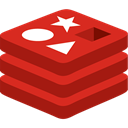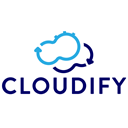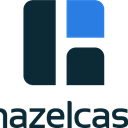Top TayzGrid Alternatives for Distributed Data Management
TayzGrid is renowned for its elastic in-memory data grid capabilities, offering a self-healing peer-to-peer dynamic data grid clustering architecture that's both incredibly fast and linearly scalable. Its intelligent replication ensures data reliability without compromising on performance, allowing users to effortlessly scale transaction and storage capacity by adding servers to the cluster. However, the diverse needs of modern applications often warrant exploring other solutions. This article delves into the best TayzGrid alternative options available, helping you find the perfect fit for your distributed data management requirements.
Leading TayzGrid Alternatives
While TayzGrid excels in its niche, numerous other robust platforms offer compelling features for in-memory data grids, NoSQL databases, and distributed systems. Here's a look at some of the top contenders that can serve as excellent alternatives.

MongoDB
MongoDB is a leading NoSQL document database known for its scalability and flexibility, offering powerful querying and indexing capabilities. It's a great TayzGrid alternative if your focus is on flexible data storage rather than strictly an in-memory grid, being Free and Open Source with support for Mac, Windows, Linux, Web, and BSD platforms.

Redis
Redis, a REmote DIctionary Server, is an open-source, networked, in-memory key-value data store with optional durability. Often referred to as a data structure server, it's an excellent in-memory database TayzGrid alternative for caching and real-time data needs. It's Free and Open Source, available on Mac, Windows, Linux, BSD, and Self-Hosted environments.

Cloudify
Cloudify is an orchestration-first, model-driven cloud management platform, open source and based on TOSCA. While not a direct in-memory grid like TayzGrid, its capabilities in cloud management, continuous deployment, and integration with MongoDB make it a versatile alternative for complex cloud-native architectures. It's Free and Open Source, supported on Mac, Windows, Linux, and Web.

Hazelcast
Hazelcast is an in-memory Open Source data grid based on Java. It directly competes with TayzGrid by allowing multiple nodes to form a cluster, distributing data evenly, and providing features like data stream processing and distributed caching. It's Free and Open Source, available on Mac, Windows, and Linux.

CouchBase
Couchbase is a leading NoSQL database that offers an excellent TayzGrid alternative for applications requiring a highly scalable and performant document database. It is Free and Open Source, with support for Mac, Windows, and Linux, making it a strong contender for diverse deployments.

Bluzelle Decentralized DB
Bluzelle is a decentralized database powered by PBFT Consensus Engine, offering a NoSQL key-value store. For those seeking a distributed and scalable database with blockchain and encryption features, Bluzelle provides a unique TayzGrid alternative, being Free and Open Source for Mac, Windows, Linux, and Java Mobile.

Cosmos DB
Azure Cosmos DB is a commercial NoSQL document database service designed for global distribution and horizontal scaling. It's a robust TayzGrid alternative for cloud-native applications requiring low-latency access to data at a global scale, offered as a Commercial web service.

Pivotal GemFire
Pivotal GemFire® is a commercial, real-time distributed data store that provides an in-memory database with a familiar Java interface. It's a strong TayzGrid alternative for enterprises seeking a highly performant and reliable distributed system, available commercially for Windows, Linux, and Web.

KeyDB
KeyDB is a fast NoSQL database with full compatibility for Redis APIs, clients, and modules. As a Free and Open Source, self-hosted solution, KeyDB serves as an excellent high-performance TayzGrid alternative, especially for those already familiar with Redis.
Choosing the best TayzGrid alternative depends heavily on your specific project requirements, existing infrastructure, and budget. Whether you prioritize pure in-memory performance, a flexible document model, or a decentralized architecture, the options presented offer compelling features. We encourage you to explore each alternative in more detail to determine which one aligns perfectly with your data management strategy.